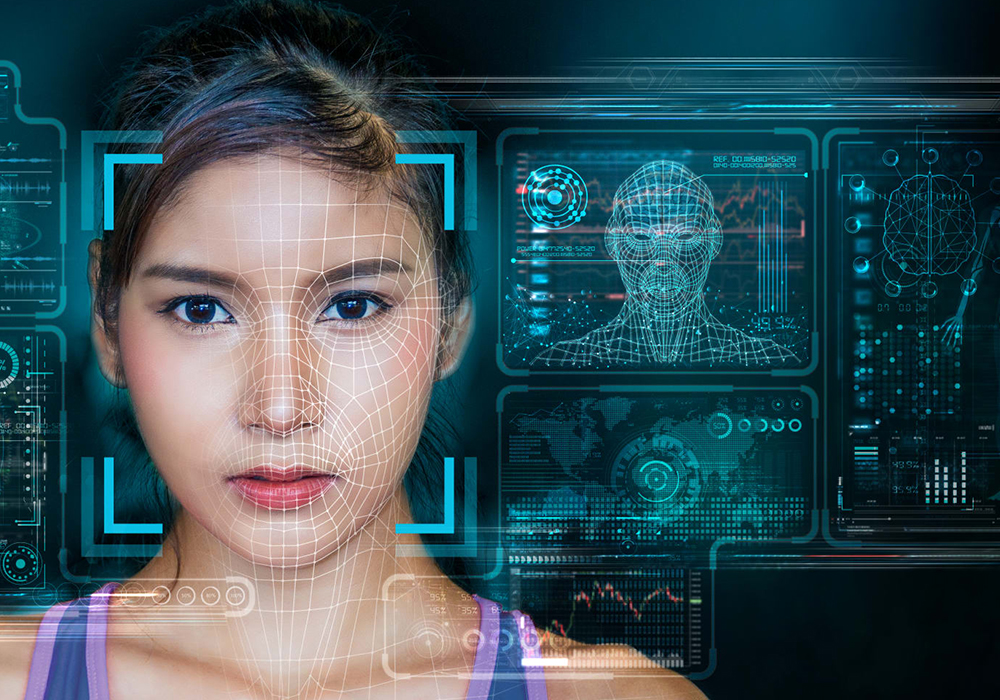A day in the process of learning about technical terminologies and inventions can never be dull or boring. The field of technology is vast, and the exciting part is that there is always something new and unique to learn about. With countless opportunities, exceptional benefits, and multiple applications, technological advancements are skyrocketing in the industry. In this article, our focus will be on the mixture of two different technologies in order to carry out an interesting process. To cut the suspense short, we will be learning about the process of image recognition in Python based on machine learning. So, let’s start with this exciting topic.
What Is Python? An Overview
To understand the whole process of image recognition and how Python is related to it, it is essential to know what Python is. Python is a widely-used, high-level programming language known for its simplicity and versatility. It is a popular choice for various applications, including image recognition in Python based on machine learning. It is easier for people related to the world of technology and programming languages to recognize this term. However, for beginners, we will look into the definition of Python in depth.
Python is known as one of the high-level programming languages. The purpose of programming languages is to be used for developing useful and functional codes that will assist computer devices in carrying out tasks effectively and efficiently. Some of the features of Python programming language are:
- It is an object-oriented programming language.
- It has dynamic semantics, dynamic typing, and dynamic binding for the rapid development of applications.
- It helps in gluing or connecting different existing components through coding.
- The syntax of Python programming language is easy to learn, etc.
The Exceptional Benefits OF Python Programming Language
Since Python is one of the most popular programming languages among developers, people often ask about the benefits it holds. Some of Python’s benefits are
- Python Is Easy
- Python Improves Productivity
- Python Is An Interpreted Programming language
- Python Is An Open-Source Programming Language
- Python Is Portable
- Python Is Easy
The first benefit of Python programming is that it is extremely easy and user-friendly. Here, easy is not just applicable in one form. Instead, the codes formed utilizing Python are easy to learn, read, and write, as their syntax is similar to that of the English language.
- Python Improves Productivity
One of the key features of Python is that it does not require extensive coding skills or requirements. This feature not only helps developers learn it rapidly but also helps them carry out a long list of tasks easily and rapidly.
- Python Is An Interpreted Programming Language
Another feature of Python is that it is an interpreted language, which means it runs the code line by line. This helps developers debug errors in the code easily, as any errors will halt further operations and be reported back.
- Python Is An Open-Source Programming Language
Speaking of benefits, Python is also known for being a free and open-source programming language that any developer can easily access.
- Python Is Portable
Last but not least, the Python programming language is portable, which means that a single piece of code can be used on multiple platforms if developers do not include any system specifications in the code.
You May Also Reads:
What is Machine Learning (ML) in Artificial Intelligence (AI)?
If you pay attention to the title of the article closely, you will notice that there are three technical terminologies used in the title. We have discussed Python programming languages above, so now it is time for the second terminology, which is known as machine learning.
If you are familiar with what Artificial Intelligence (AI) is, you might know what ML is. Artificial Intelligence technology is a computerized program that enables computers and other electronic devices to work in a similar manner as a human brain would.
Machine learning, on the other hand, is a sub-branch of Artificial Intelligence (AI) that enables electronic gadgets to carry out tasks through training and learning. After this learning, the ML system and algorithms will successfully carry out the required tasks with accuracy.
What Is Image Recognition? Definition Of The Process
Coming towards the third and last terminology used in the title of the blog, we will now define what image recognition means. By its name, it is pretty evident that image recognition is a process. Through this process, we can easily recognize objects in an image and assign them to a certain category or class.
How Does Image Recognition Differ Between Human Beings And Technological Machines?
For the longest period of time, image recognition was known to be a process that only human beings were capable of carrying out. It is obvious because how would you expect an electronic machine like a computer or mobile phone to detect and identify objects in an image?
Nowadays, with the gradual evolution of technology, the realm of image recognition procedures has expanded and now includes machines to carry out the process smoothly and accurately. However, the working processes of both human beings and machines are quite different, and we will discuss them one by one.
- Image Recognition In Human Beings
The process of image recognition and object identification in human beings is purely related to their learning and prior experience of interacting with things in their lives. As human beings, we are accustomed to learning about objects and associating them with certain classes. If we are unable to recognize a living or non-living thing, we will still be able to differentiate between known and unknown knowledge. This attribute of human beings makes them superior to machines.
- Image Recognition In Electronic Machines
On the other hand, in machines, the image recognition process is highly dependent on the kind of data being installed in the system. A machine will only be able to recognize and identify objects on the basis of the data it has if the data is present in the required image. An electronic device will neither give you any results nor be able to differentiate the object from other things for second guesses.
The Process Of Image Recognition With Python Based On Machine Learning
Machine Learning (ML) conducts the process of image recognition in a very smooth and swift manner. The goal of the process is to identify, label, and classify objects that are detected in the pictures into their related categories.
In order to carry out this procedure, machine learning follows a set of sub-methods to reach its end goal. These methods are
- Classifying Images.
- Localizing Objects.
- Detecting Objects.
- Segmenting Objects.
- Classifying Images
This step or method includes labeling objects and data sets to classify them into a specific category.
- Localizing Objects
Object localization is defined as the process of locating objects in an image with the help of drawing a box around them. This way, the system is well aware of the number of objects present in the picture.
- Detecting Objects
Object detection is the process of machine learning algorithms that help devices utilize the installed data sets and classify objects related to a certain category.
- Segmenting Objects
Object segmentation focuses on recognizing the different aspects and finding and naming each and every object in the image. Instead of using bounding boxes, the process of segmentation emphasizes the contour of the item in the image.
With the help of these procedures, machine learning has made image recognition way easier and possible in today’s time. The application of image recognition or face recognition is being utilized in many industries nowadays, and the domain is just getting bigger and wider.
Image Recognition In Python Based On Machine: Is It Possible?
It has now been made pretty clear that in order for computer devices to carry out important tasks, it is necessary that functional codes and software be installed in them with the help of programming languages. We all know that Python is also a programming language used for similar purposes. However, people often ask if Python is usable for developing codes for image recognition technology in electronic devices. The answer to this question is Yes. We will discuss the How of this question in the next paragraph.
The first requirement to carry out this process easily is to install Python and the required extension packages, like libraries, on your machine before you can begin working. The amazing part of the Python programming language is that some of the packages have programs with user-friendly and easy-to-learn code that make working with AI convenient.
However, there are some suggestions that professionals have made for successful Python image recognition. For instance, having a gadget that can handle and support high-quality images. The process begins with providing Python and the image recognition program access to a free and labeled dataset to begin identifying the different components of an image. Finally comes the step of coding requirements, which includes creating and labeling the boundary boxes.
You May Also Read:
A Complete Guide On How Image Recognition In Python Based On Machine Learning Works
For a beginner-friendly and detailed approach to image recognition with regards to the Python programming language and machine learning algorithms, we will now review a guide to the whole process.
The process starts with a neural network (a part of machine learning algorithms) receiving an input picture for image recognition in Python. The process is divided into two broad steps.
- Identification
This process refers to identifying the objects present in an image for the purposes of segmentation, localization, classification, etc.
- Classification
This step or process refers to the successful classification of objects into single or multiple categories.
An input image that is presented in the form of mere pixels goes through the same kind of procedure, no matter if the purpose of image recognition is different for each image. These steps include
- Convolutional Layer
- Relu Rectifier
- Maximum Pooling Layer
- Flattening
- Fully Connected Layer
- Convolutional Layer
The purpose of images passing through a convolutional layer is to detect certain features in the images that make the process of computation easier and more specific.
- Relu Rectifier
The process or layer of the real rectifier helps convert images into a non-linear version in order to make them more separable for the system.
- Maximum Pooling Layer
Just like the convolutional layer, the purpose of the maximum pooling layer is to identify as many features in the image as possible. This helps in reducing the size of the output as well as removing all the unnecessary details in an image.
- Flattening
The layer of flattening helps the ML algorithms transform the matrix output of the preceding layer into ANN-acceptable code with the help of a single column of numbers.
- Fully Connected Layer
The purpose of the fully connected layer is to present an artificial neural network. This step is helpful in connecting the previously followed steps with the output layer or purpose of image recognition in order to label objects.
Some Useful Benefits Of Python For Artificial Intelligence (AI)
In the last section of the article, we will discuss some of the crucial and exceptional benefits of Python image recognition and AI technology.
- User-Friendly Implementation
- Availability Of Learning Facilities
- The Presence Of A Larger Immunity
- Cross-Platform Feasibility
- User-Friendly Implementation
The first benefit of Python for AI or Python image recognition systems is that learning and implementing this programming language is one of the easiest tasks to do if you are familiar with the English language. This quality of Python has helped developers easily and rapidly develop code for AI systems.
- Availability Of Learning Facilities
Python is not only an easy programming language, but learning this language has also become convenient for beginners interested in AI or ML. Nowadays, there are multiple platforms available, like online courses, tutorials, and other materials, to kickstart the journey.
- The Presence Of A Larger Immunity
It is pretty necessary for a newbie to have professional guidance and support in the field of technology. With the rise of advancements like AI, the community of Python developers is also growing, making it easier for developers to connect for help and support.
- Cross-Platform Feasibility
Lastly, Python is a cross-platform language, which means that a single piece of code is reusable or can be implemented on different platforms. This feasibility has made it an even more attractive programming language in the AI field.
Wrapping Up: Image Recognition In Python Based On Machine Learning
If we focus on the purpose of Python being utilized for ML-based image recognition, there is no doubt that it has made the process ten times more rapid and effective. Both of these technologies have started to serve many industries, like mobile app development, the healthcare industry, e-commerce, etc.
You May Also Read:








